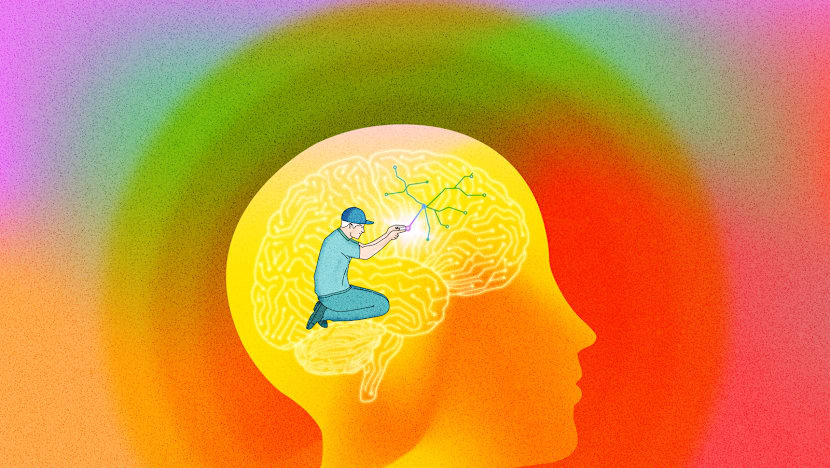Science
Science Explores Manifestation: Can Thoughts Shape Outcomes?

The concept of manifestation, popularized on social media platforms like TikTok and Instagram, suggests that individuals can bring their desires—be it career success or personal happiness—into reality through focused thought and visualization. Critics often label this practice as pseudoscience, yet recent insights from neuroscientists and psychologists propose that while manifestation may not operate on mystical principles, it is rooted in cognitive processes that can influence behavior and outcomes.
Dr. Natasha Mitter, a principal clinical psychologist at Us Therapy Singapore, asserts that the core elements of manifestation—visualization, affirmations, and intentional focus—align closely with established psychological strategies. “The brain is not static; it is shaped by repeated thoughts, behaviours, and emotional experiences,” she states. This dynamic nature of the brain, known as neuroplasticity, allows for the possibility of changing one’s thought patterns to support personal goals.
In his 2024 publication titled *Mind Magic: The Neuroscience of Manifestation and How It Changes Everything*, the late Dr. James Doty highlighted how intentional focus can reshape neural pathways. He argued that by strengthening the brain’s grey matter, which is associated with learning and cognitive growth, individuals can unlock greater potential.
The Neuroscience Behind Manifestation
Research indicates that the act of imagining success or repeating affirmations engages the brain’s reward and motivation systems, making it more likely that individuals will take actions toward their goals. Dr. Jean Liu, an associate professor of psychology at the Singapore Institute of Technology (SIT), explains, “It is well established that thoughts influence behaviour, which directly affects outcomes.” This principle underpins cognitive-behavioral therapy, which emphasizes the need to challenge negative beliefs to enhance motivation towards achieving goals.
Professor Annabel Chen, a clinical neuropsychologist at Nanyang Technological University (NTU), points to brain imaging studies that reveal positive thinking activates areas associated with motivation and reward. “When we engage in self-affirmation, the ventromedial prefrontal cortex lights up, linking new goals with personal values,” she elaborates. As these brain regions work together, they enhance the perceived importance of a goal, increasing the likelihood of taking action.
Dr. Mitter notes that visualization can mirror actual experiences in the brain. Athletes often employ this technique by picturing their performance, which activates motor-related areas as if they were physically executing the action. This mental rehearsal not only prepares the brain for success but also reinforces neural connections that support confidence and focus.
Studies utilizing functional magnetic resonance imaging have shown that visualizing specific scenes or goals activates similar brain regions as perceiving those realities. “We are conditioning our minds to align with a desired reality,” Dr. Mitter explains. Over time, as individuals repeatedly visualize their objectives, they strengthen the neural pathways that facilitate adaptive thought patterns.
Strategies to Harness Manifestation Effectively
Experts recommend practical approaches to manifestation that avoid falling into the realm of pseudoscience. Establishing clear, achievable goals is essential. Professor Chen emphasizes that realistic objectives activate the brain’s motivation circuits, preventing discouragement when outcomes are not immediately realized. “If you believe a goal is realistic, your brain releases motivation signals to help you stay focused,” she says.
Conversely, overly ambitious goals can diminish motivation. “Setting realistic, step-by-step goals keeps your brain engaged and makes progress feel rewarding,” Professor Chen advises. While social media often promotes vague affirmations, professionals emphasize the importance of using empowering language that highlights personal agency.
Dr. Mitter suggests affirmations should be self-directed and specific. Phrases like “I can handle challenges” encourage the brain’s motivation systems, in contrast to passive statements that relinquish control. By consistently practicing affirmations, individuals can strengthen the neural circuits that support positive beliefs and behaviors, much like building muscle through exercise.
Verbalizing affirmations also plays a crucial role. Dr. Mitter explains that articulating these positive statements engages linguistic processing centers in the brain, while the content stimulates areas involved in emotional regulation and memory. Coupled with visualization, this creates a robust mental imprint that fortifies motivation and belief in one’s capabilities.
To achieve meaningful change, experts stress the importance of pairing positive thoughts with concrete actions. “Thought alone won’t create real change,” Professor Chen asserts. “Manifestation has a scientific basis in motivation and behavior, but it thrives on action, not magic.”
The process of rewiring the brain does not happen overnight; it requires sustained effort and consistency. Long-term change often takes weeks or months of repeated practice. As Dr. Mitter concludes, “With time, these patterns become part of the brain’s ‘automatic wiring,’ influencing how we think and respond.”
Ultimately, the journey of manifestation is not about instantaneous transformation. It is about the consistent application of thought and action, allowing individuals to reshape their neural pathways and, in turn, their realities.
-

 Lifestyle4 months ago
Lifestyle4 months agoHumanism Camp Engages 250 Youths in Summer Fest 2025
-

 Business4 months ago
Business4 months agoKenvue Dismisses CEO Thibaut Mongon as Strategic Review Advances
-

 Sports4 months ago
Sports4 months agoDe Minaur Triumphs at Washington Open After Thrilling Comeback
-

 Top Stories4 months ago
Top Stories4 months agoColombian Senator Miguel Uribe Shows Signs of Recovery After Attack
-

 Sports4 months ago
Sports4 months agoTupou and Daugunu Join First Nations Squad for Lions Clash
-

 Health4 months ago
Health4 months agoNew Study Challenges Assumptions About Aging and Inflammation
-

 World4 months ago
World4 months agoASEAN Gears Up for Historic Joint Meeting of Foreign and Economic Ministers
-

 Business4 months ago
Business4 months agoOil Prices Surge Following New EU Sanctions on Russia
-

 Entertainment4 months ago
Entertainment4 months agoDetaşe-Sabah Violin Ensemble Captivates at Gabala Music Festival
-

 Entertainment4 months ago
Entertainment4 months agoBaku Metro Extends Hours for Justin Timberlake Concert
-

 Business4 months ago
Business4 months agoU.S. House Approves Stablecoin Bill, Sends to Trump for Signature
-

 Top Stories4 months ago
Top Stories4 months agoRethinking Singapore’s F&B Regulations Amid Business Closures









